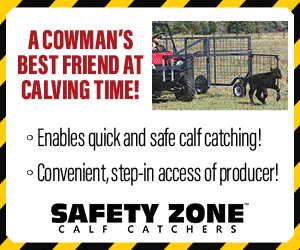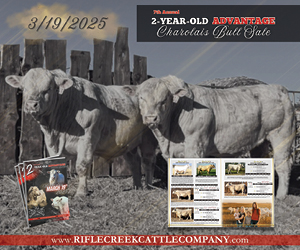A 1939 epic book that chronicled the cowboy adventures of Teddy Blue Abbott
by Bert Entwistle
In the summer of 1937, Helena Huntington Smith, a writer and lover of the old West, was searching for some authentic background material for her novel about the cowboys and cattle drives of the 1870s and 1880s. Fortunately, for generations of Western history enthusiasts, her search led to an old-time cowboy and cattle rancher by the name of Edward Charles “Teddy Blue” Abbott.
She tracked him down and found him living with his wife, Mary, on a ranch outside of Lewistown, Montana. Smith wrote that, “Today he is seventy-eight years old, tough as whipcord, diamond clear as to memory, and boiling with energy.” The timing was fortunate for both of them. Abbot had been trying to write a book of his own adventures without much success. After spending time with him, she set aside her own novel and offered to help write his story. The result: We Pointed Them North: Recollections of a Cowpuncher, published in 1939, is considered one of the most respected histories ever written of the cattle drive period.
Born in Norfolk County, England, in 1860, Teddy’s father packed up the family and moved to America in 1871. Abbott’s father, J.B., took up ranching and farming just outside Lincoln, Nebraska. Soon after he settled the family in, J.B. made the long trip to Texas to put together a herd of longhorns.
“I was the poorest, sickliest little kid you ever saw,” wrote Abbott. “All eyes, no flesh on me whatsoever.” He was taken along with the hopes that the fresh air and time spent in the saddle would toughen him up. Abbott told Smith that the days of hard work on that first drive, “made a cowboy out of me. Nothing could have changed me after that.”
That first herd of longhorns got J.B. started in the cattle business and provided the perfect playground for a young man to learn the business and live out his dreams. Teddy’s dream had started out not to be a cowboy, but rather an Indian. They were in Pawnee country and he spent all the time he could with them, but try as he might, he could not get them to accept him as a member of tribe. After being sent away for the last time he changed his mind and decided a cowboy career was the next best thing. Either way, he could still live the nomadic life he dreamed of. Instead of following the buffalo herds, he would be moving cattle along the same trails.
“There were worlds of cattle in Texas after the Civil War,” wrote Abbott. “By the time the war was over they was down to four dollars a head – when you could find a buyer. Here was all these cheap, long-horned steers overrunning Texas; here was the rest of the country crying for beef – and no railroads to get them out. So they trailed them out, across hundreds of miles of wild country thick with Indians.”
Helena Smith worked with Abbott through ’37 and ’38 and was enthralled at his tales of the cowboys and the cattle drives. Teddy’s motivation to get the story down was clear. He wanted to set the record straight, to tell the story exactly as it was. After reading the accounts written by others, he told her they may be accurate, but were basically plain and boring. “They never put in any of the fun, and the fun was at least half of it.”
He hated the politeness and the cleaned up versions of their text. “You have all these old fellows telling stories, and you’d think they were a bunch of preachers, the way they talk. And yet some of them raised more hell than I did.”
Abbott talked with his friend Charlie Russell about making a book together, with Charlie doing the pictures, but Russell died in 1926, and the book was put away and forgotten. Helena Smith realized that Abbott would not be well served if she tried to clean up his prose for polite society, so she wrote it exactly like he told it; all realism and little romanticism, with all the salty language and trail dust included.
Abbott recalls that, “Those first trail outfits in the seventies were sure tough. They had very little grub and they run out of it and ate straight beef; they had only three or four horses to the man, mostly with sore backs, because the old time saddles eat both ways, the horses back and the cowboy’s pistol pocket.”
By age 19, his father and brothers got out of the cattle business for other ventures, and Teddy found himself in Austin, Texas, signing on with a questionable company known as the Olive outfit. They drove a herd 800 miles to the Loup River country in Nebraska. Averaging 10 to 15 miles a day, the drive had every bit of adventure that a young cowboy could ever want and then some. The drive had stampedes, Indians, rustlers, floods and long stretches without water. It made for long brutal days and great stories.
Teddy’s accounts of drinking, bar women, practical jokes and cravings for things they missed on the trail (like oysters and celery), are classic. His eye for the detail and his sharp memory described the men of his time, “In person, the cowboys were mostly medium sized men, as a heavy man was hard on horses.” He explained that no self-respecting cowboy would ever carry two sixguns. His descriptions of the clothes, customs and vernacular of the day are amazing. The detailed accounts of Dodge City, Kansas, Ogallala, Nebraska, Miles City, Montana and other cattle towns of the day give us a unique look into life before modern civilization closed in.
Teddy Blue was a product of the period he lived in. He was an outspoken atheist, claiming, “Ninety percent of them (cowboys) was infidels.” He hated the “nesters” coming west to put up fences and carve up the land. He loved the bare-naked prairie for what it was; a beautiful, empty paradise with nothing but buffalo, Indians and grass.
When backstage at a theatre in Miles City, he caught his spur on a carpet and crashed through a partition and onto the stage. Playing it for a laugh, he straddled a chair and bucked it across the stage hollering “Whoa, Blue, whoa, Blue . . .” ‘Teddy Blue’ was born at that moment and stayed with him for the rest of his life.
After several more trips north with Texas herds, he married Mary Stuart in 1889, the half-Shoshone daughter of legendary Montana pioneer, Granville Stuart, and settled in as a cattleman near Giltedge, in Fergus County, Montana. The couple raised five boys and three girls and became active in local politics, eventually enjoying 14 grandchildren and one great-granddaughter.
Teddy Blue died of pneumonia in 1939, just days after the book written by Abbott and Smith was published.
Contact Bert at:





